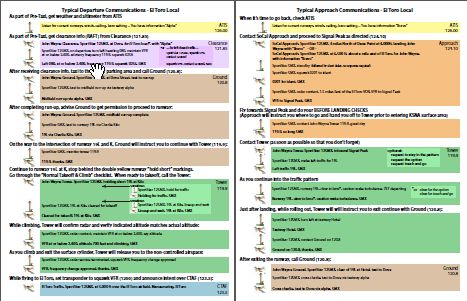Not the actual verb-age I need to use with them per-say, but the proper order of whom to contact.
Good question. I screwed this up a few times before I figured it out. Only had to go to a very lightly used class D in my training.
Do you have foreflight? Or one of the ipad apps that include approach plates?
Even as a VFR pilot, get those plates on your i-pad and saved.
From my experience, any airport large enough for a tower and what not is going to have an airport diagram in the approach plates for that airport. The Airport diagram should have everything you need. It has a detailed map of the taxiways, and a list of the frequencies for the airport.
The list goes like this.
1: ATIS (listen, copy relevant info and the atis code)
2: Clearance Delivery (contact, tell them who you are, where you are, what you want to do 'VFR to KRUQ at 4500 ft' and inform them you have information 'zulu' or whatever the atis code is) Copy the departure freq, any heading and altitude instructions, and taxi instructions if issued
3: Ground (contact and tell them who you are, where you are, and that you are ready to taxi)
4: Tower (once you reach the point ground has cleared you to, call tower and give them something like this 'tower, cessna xxx ready for departure, holding short runway 19')
A lot of airports don't have all of these. If one is missing, skip it. Clnc Del is frequently omitted at smaller towered airports. If so, just contact ground and pretend they are clearance delivery - give them the same spiel on initial call up and tell them who you are, where you are and where you want to go ...



